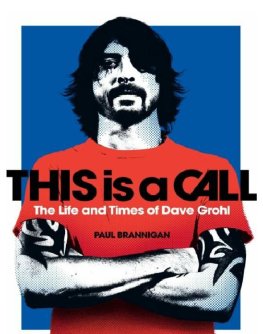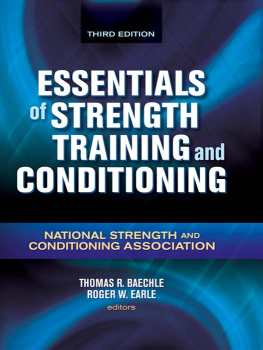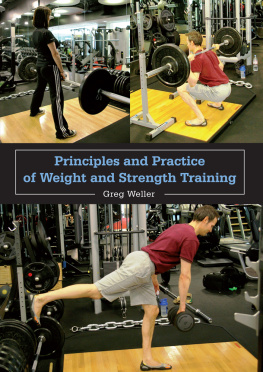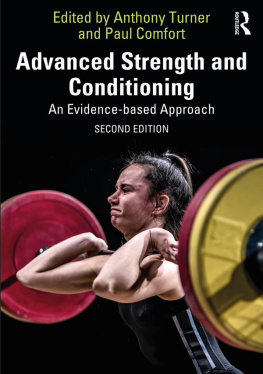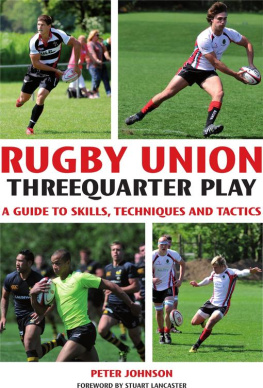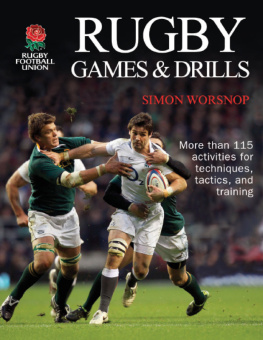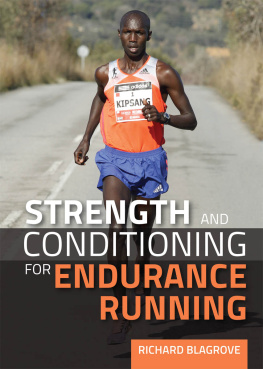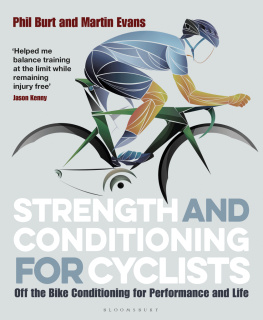Joel Brannigan - Strength and Conditioning for Rugby Union
Here you can read online Joel Brannigan - Strength and Conditioning for Rugby Union full text of the book (entire story) in english for free. Download pdf and epub, get meaning, cover and reviews about this ebook. year: 2016, publisher: Crowood, genre: Home and family. Description of the work, (preface) as well as reviews are available. Best literature library LitArk.com created for fans of good reading and offers a wide selection of genres:
Romance novel
Science fiction
Adventure
Detective
Science
History
Home and family
Prose
Art
Politics
Computer
Non-fiction
Religion
Business
Children
Humor
Choose a favorite category and find really read worthwhile books. Enjoy immersion in the world of imagination, feel the emotions of the characters or learn something new for yourself, make an fascinating discovery.
- Book:Strength and Conditioning for Rugby Union
- Author:
- Publisher:Crowood
- Genre:
- Year:2016
- Rating:3 / 5
- Favourites:Add to favourites
- Your mark:
- 60
- 1
- 2
- 3
- 4
- 5
Strength and Conditioning for Rugby Union: summary, description and annotation
We offer to read an annotation, description, summary or preface (depends on what the author of the book "Strength and Conditioning for Rugby Union" wrote himself). If you haven't found the necessary information about the book — write in the comments, we will try to find it.
Strength and Conditioning for Rugby Union — read online for free the complete book (whole text) full work
Below is the text of the book, divided by pages. System saving the place of the last page read, allows you to conveniently read the book "Strength and Conditioning for Rugby Union" online for free, without having to search again every time where you left off. Put a bookmark, and you can go to the page where you finished reading at any time.
Font size:
Interval:
Bookmark:
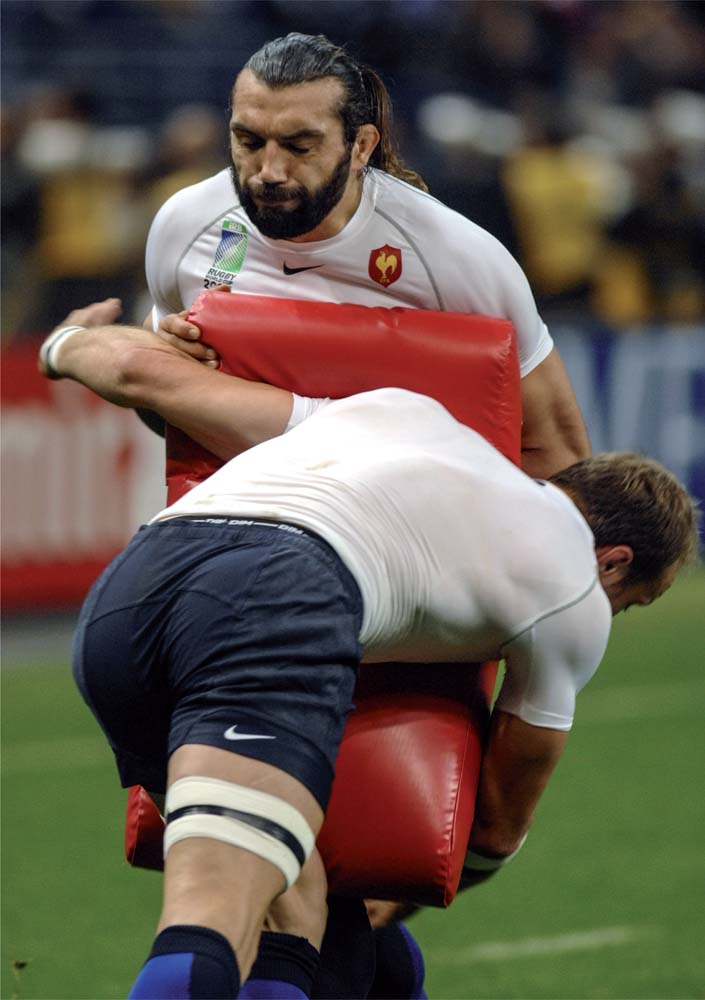

The Crowood Press Ltd
Ramsbury, Marlborough
Wiltshire SN8 2HR
This e-book published 2016
CONTENTS
INTRODUCTION
R ugby union as a sport has seen continual evolvement over the years, and never more so than since the game officially took its professional status in the higher echelons from 1995. While on the pitch tactics have seen more formalized approaches to skill acquisition, it is probably off the pitch where the biggest changes have occurred. From merely training twice a week on the pitch at schools and clubs, modern day rugby players now train as much off the field of play as on it. No area has developed more than strength and conditioning. The distinct factors that make up the complete rugby player strength, speed, power, fitness and agility are now specifically targeted to allow individuals and teams gain the upper hand on the opposition. Players have gone from traditionally training for fitness as an add-on to their rugby training to seeking out structured athletic training interventions. Alongside this, with the modern players being physically bigger and faster, the need to ensure players are more robust and free from injury has led to the demand for knowledge in the prescription of strength and conditioning.
This book lays out the underpinning science of strength and conditioning in rugby. Using the fundamental principles of training, it details a structure of assessing rugby players that in turn will allow appropriate training interventions to be both planned and, most importantly, coached to a wide range of rugby playing levels.
Three distinct Case-study Rugby Players are used to show variation in programming in the applied setting. Its important to understand that while all three are playing the same game of rugby union, the game itself and the players vary greatly in their appearance, needs and subsequent training goals. The examples will allow coaches, parents and players to prescribe appropriate training strategies with specific groups, and review the success of these programmes with objective training data. It is this skill that can be the difference between a player developing and reaching goals within a programme, or ultimately wasting valuable time and energy on an unsuitable training programme.
THE YOUNG DEVELOPING RUGBY PLAYER
The athletic needs of the adolescent developing rugby player form the foundation for all future athletic development. This key stage can often be overlooked, with young players simply being given a watered down version of adult programmes. It can also be an area that is often subject to misinformation and a lack of knowledge. Its essential that the distinct hormonal, mechanical and neural windows are trained appropriately during these stages and to ignore them would be detrimental in the long term. Looking not only at the key developmental stages and how to develop them, it will also pay close attention to other practical considerations such as time available, conflicting sporting commitments, available locations and equipment. The aim is to put in place an appropriate long term development programme that is process driven for future success, rather than outcome driven for the short term.
THE AMATEUR WEEKEND RUGBY PLAYER
While often underplayed, there is still both a desire and a need for amateur recreational rugby players to train appropriately. Not only will it aid performance, but crucially it can help develop more robust, injury-free sportspeople. While prescription of exercise may often appear reduced in volume for the recreational player, it should still be aligned with the same underpinning scientific principles. Again many factors can impact on both time available to train and the potential adaptations but there is still plenty of room for development and improved performance.
THE ASPIRING PROFESSIONAL RUGBY PLAYER
At the far end of the spectrum there is now the need to prepare aspirational rugby players both for professional rugby and the higher levels of representative rugby. While the journey into these ranks will mirror the long term development of the young developing rugby player initially, it must then be appropriate to take players to a higher level of athletic development. Both professional and representative structures nowadays have positional norms with regards to physical characteristics and it requires a higher degree of prescription regarding strength and conditioning. Not only should the programme take into consideration the demands of the game at the higher level, but there is the added factor of achieving the upper hand on the both the more physically capable opposition player, and competitors within the players own squad structure.
T he game of rugby union has undergone significant changes both in its style and appearance since the pre-professional era, resulting in some marked changes in the physiological profile of the modern day player. As players have become larger, leaner and quicker (1, 2), there has been a conscious shift in the study of the physiological aspects of the game to provide efficacy for modern day programming and training methods. As a result, we now see support teams even at amateur levels having evolved from the traditional two-man group of a forwards and backs coach to an all-encompassing interdisciplinary coaching team. We have also seen the introduction of sport science and medicine professionals such as physiotherapists, video analysts, specific skill coaches and conditioning staff, who work together to pinpoint potential areas where athletic development can improve performance and, ultimately, results on the pitch.
While physiological and anthropometrical profiling is nothing new in sport, rugby union has often proved to be a complicated subject area for the simple fact it involves many different positional groups, each with differing profiles. Whereas the profiling and subsequent programming for more streamlined physiological sports such as sprinting, endurance events and jumping can be more straightforward, the very nature of rugby means we often have to have broader fields, which in turn can make adaptations harder to come by.
Data from both timemotion analysis (TMA) studies and global positioning (GPS) studies have helped build up a picture of the game and enabled us to quantify speeds, locomotive activity and contact, and to position specific events through tracking of collected data. Although these studies can have some limitations such as showing incidence of activity but not its physical extent, they are a useful tool to guide training. It must also be said the tactical skill level of competition, and indeed the psychological impact of game events, cannot be quantified.
Next pageFont size:
Interval:
Bookmark:
Similar books «Strength and Conditioning for Rugby Union»
Look at similar books to Strength and Conditioning for Rugby Union. We have selected literature similar in name and meaning in the hope of providing readers with more options to find new, interesting, not yet read works.
Discussion, reviews of the book Strength and Conditioning for Rugby Union and just readers' own opinions. Leave your comments, write what you think about the work, its meaning or the main characters. Specify what exactly you liked and what you didn't like, and why you think so.


